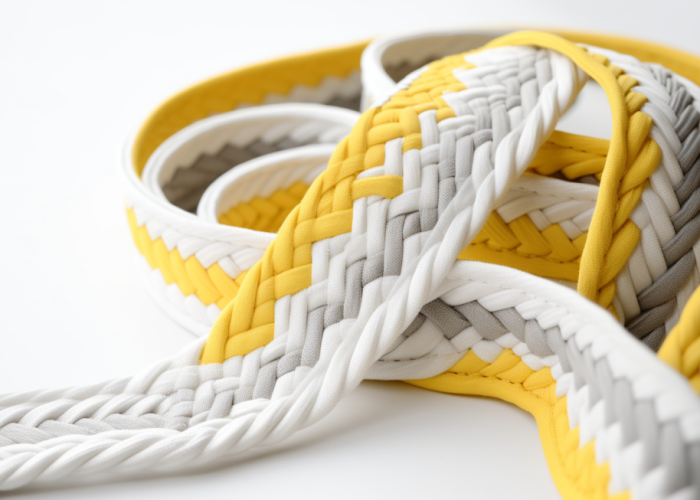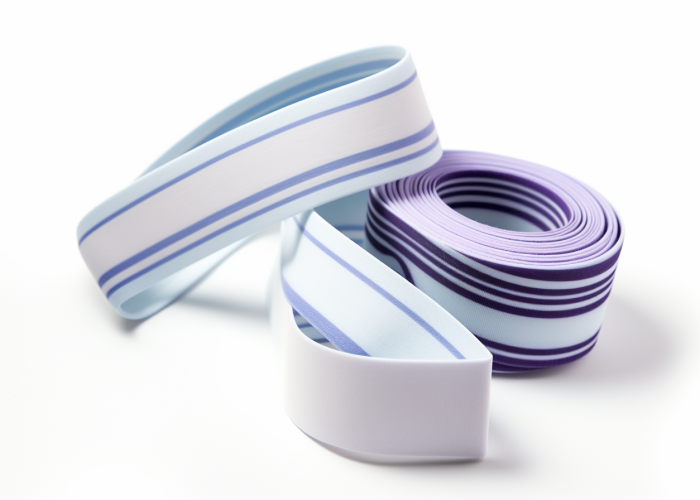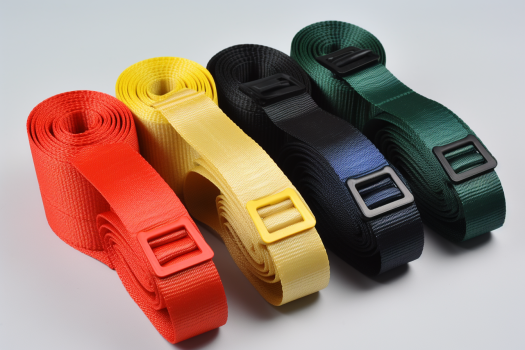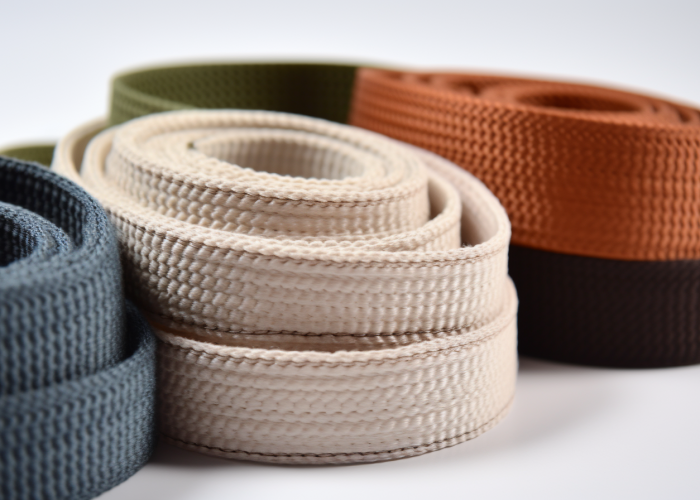Product developers must balance performance, sustainability, and cost when selecting webbing materials. While nylon dominates through strength advantages, specific applications favor cotton’s unique properties. Our manufacturing expertise helps optimize these opportunities through design collaboration and performance validation.
Cotton webbing is a reliable alternative in eco-friendly, comfort-focused, anti-static, or cost-sensitive applications. It’s ideal for biodegradable products, skin-contact gear, custom dyeing, heritage designs, and low-tension uses where nylon’s high strength isn’t required.
Explore patient sling strap applications with performance data, compliance insights, and engineering support to optimize materials and speed up development.


Webbing manufacturing expert with 15+ years of experience helping product developers build high-performance straps for industrial, medical, and outdoor use.
Yes, cotton webbing is ideal for eco-conscious products. It biodegrades in 180 days, supports GOTS certification, and meets ASTM D6400 compostability standards—making it a sustainable alternative to nylon, which can take decades to decompose.
Quick Overview
Cotton’s origin as a renewable plant fiber makes it highly compatible with low-impact and closed-loop manufacturing goals. Biodegradability testing following ASTM D6400 protocols confirms that cotton webbing decomposes 90% faster than synthetic alternatives, making it ideal for disposable packaging, promotional items, or outdoor gear designed for minimal environmental footprint.
GOTS (Global Organic Textile Standard) certification offers third-party verification that the material meets stringent criteria for chemical use, water stewardship, and labor conditions. This not only supports brand sustainability narratives but is increasingly required by procurement teams aligning with ESG and corporate social responsibility frameworks.
Our team supports eco-focused projects with testing documentation, lab coordination, and lifecycle impact assessments. We work with product developers during the early design phase to match cotton fiber grades, weave constructions, and finishing treatments to your application—balancing performance requirements with sustainability goals.
Design Note: Cotton webbing offers ~40–50% lower tensile strength than nylon at equivalent widths. For load-bearing uses, we recommend design adjustments to account for reduced capacity, or hybrid solutions blending sustainability with synthetic performance where needed.
Choose cotton webbing for comfort-focused products with prolonged skin contact. It offers 25–30% better moisture wicking than polyester and is naturally hypoallergenic—ideal for medical devices, infant gear, and athletic accessories requiring biocompatibility and softness.
Quick Overview:
Medical device applications benefit from cotton’s natural breathability and reduced skin irritation potential. Orthopedic braces, patient transfer belts, and rehabilitation equipment require materials that maintain comfort during extended wear periods. Cotton webbing’s fiber structure allows superior air circulation compared to synthetic alternatives, reducing heat buildup and moisture retention that can cause skin breakdown or discomfort.
Infant and child product applications leverage cotton’s hypoallergenic properties and soft texture. Baby carriers, high chair straps, and safety harnesses benefit from cotton’s natural moisture absorption and temperature regulation. The absence of synthetic processing chemicals reduces potential allergen exposure, while the material’s natural flexibility provides comfortable load distribution across contact points.
Our custom engineering examples include weave structure modifications for enhanced ergonomics, such as creating softer edges for shoulder straps or optimizing thickness for specific pressure distribution requirements. Fiber selection can be tailored to maximize comfort characteristics while maintaining necessary strength properties for safety-critical applications.
Design Note: Cotton webbing requires 5:1 safety factors for comfort applications to account for moisture-related strength reduction. Early collaboration ensures comfort optimization doesn’t compromise safety requirements, particularly for infant or medical applications where regulatory compliance is essential.

Cotton webbing supports custom branding with 40% deeper dye saturation than synthetics, 500+ wash cycle color fastness (AATCC 61-2A), and a premium texture that elevates luxury product appeal and brand perception.
Quick Overview:
Fashion industry applications capitalize on cotton’s natural fiber structure that accepts dyes more readily than synthetic materials. This absorption advantage enables deeper, richer colors that enhance visual appeal and brand differentiation. Natural cotton fibers create slight texture variations that add visual depth and premium feel compared to uniform synthetic webbing appearance.
Luxury brand positioning benefits from cotton’s inherent tactile qualities and association with natural, premium materials. High-end handbags, designer belts, and premium outdoor gear use cotton webbing to convey quality and environmental consciousness. The material’s ability to develop a distinctive patina over time creates authentic aging characteristics valued in heritage and artisanal products.
Our collaborative problem-solving approach addresses unique branding challenges through custom dyeing processes, specialized finishes, and texture modifications. Design phase integration ensures color specifications, brand guidelines, and performance requirements align seamlessly. We can achieve precise color matching to brand standards while maintaining colorfastness and durability requirements.
Design Note: Natural cotton dyeing may require 10-15% longer processing times than synthetic alternatives, affecting production schedules. However, the superior color quality and brand differentiation typically justify the timeline investment for premium applications.
Cotton webbing is favored in anti-static environments and food-grade applications, offering 10× better static dissipation than nylon, NFPA 70E compliance, and USDA approval due to its natural resistance to chemical absorption and non-synthetic composition.
Quick Overview:
Electronics manufacturing environments require materials that minimize static buildup during component handling and transport. Cotton webbing’s natural moisture absorption creates controlled conductivity that safely dissipates static charges without creating spark hazards. This property makes cotton ideal for semiconductor facilities, clean rooms, and explosive atmosphere applications where static control is critical for safety and product quality.
Low-spark applications in hazardous environments benefit from cotton’s natural fiber composition that doesn’t generate synthetic static buildup. Chemical processing facilities, grain handling operations, and fuel storage areas often specify natural fiber materials to reduce ignition risks. NFPA 70E compliance testing validates cotton webbing’s suitability for electrical safety applications with appropriate safety factor calculations.
Food-grade tie-downs and handling systems leverage cotton’s USDA compliance and reduced chemical absorption compared to synthetic alternatives. The natural fiber structure doesn’t retain cleaning chemicals or contaminants that could transfer to food products, making cotton webbing suitable for direct food contact applications and clean room environments.
Our custom engineering examples include weave modifications for enhanced anti-static performance and specialized treatments for specific chemical resistance requirements. Performance optimization ensures materials meet both safety standards and operational demands for your specialized industrial environment.
Design Note: Cotton webbing’s moisture sensitivity requires environmental controls in humidity-critical applications. Strength can vary ±15% based on ambient conditions, necessitating design compensation for consistent performance in variable environments.

Cotton webbing is required for heritage projects where historical accuracy and period-appropriate materials are essential. It retains 85% strength over 50 years in controlled environments, making it ideal for museum restorations and antique reproductions. However, UV exposure can reduce its strength by 30–40% annually without conservation treatments.
Quick Overview:
Traditional craftsmanship preservation requires materials that match historical production methods and aesthetic characteristics. Cotton webbing provides the authentic look, feel, and aging properties necessary for accurate restoration work. Museums and cultural institutions specify natural cotton for exhibits where synthetic materials would compromise historical integrity or create anachronistic elements in period displays.
Ethnic textiles and cultural authenticity projects benefit from cotton’s natural fiber heritage and traditional dyeing compatibility. Ceremonial garments, traditional costumes, and cultural artifacts require materials that respect historical techniques and cultural significance. Cotton webbing’s ability to accept natural dyes and develop authentic patina supports these preservation goals.
Archival conservation standards favor cotton for long-term stability in controlled environments. The material’s predictable aging characteristics and compatibility with conservation treatments make it suitable for museum storage and display applications. Proper environmental controls and UV protection can extend cotton webbing’s functional lifespan significantly beyond typical industrial applications.
Our design phase integration includes authenticity verification, period-appropriate specification development, and conservation treatment recommendations. We collaborate with historians, curators, and conservation specialists to ensure materials meet both historical accuracy and preservation requirements for long-term cultural value.
Design Note: Heritage applications require specialized conservation treatments and environmental controls. UV exposure limits outdoor use to 2-3 years maximum without protective treatments, making indoor or covered applications preferable for preservation projects.
Yes, cotton webbing offers 15–25% cost savings over nylon for applications under 500 lbs working load. It becomes especially cost-effective at volumes above 10,000 linear feet and reduces disposal costs due to its biodegradability, making it ideal for packaging, temporary fixtures, and budget-sensitive projects.
Quick Overview:
Retail packaging applications capitalize on cotton’s lower raw material costs for non-critical strength applications. Gift packaging, promotional bags, and display systems benefit from cotton’s aesthetic appeal and cost advantages when working loads remain under 500 pounds. The material’s natural appearance enhances perceived value while maintaining budget-friendly pricing for high-volume applications.
Temporary horticulture uses leverage cotton’s biodegradability advantage, eliminating disposal costs associated with synthetic materials. Plant ties, garden supports, and agricultural applications can decompose naturally without environmental cleanup requirements. This end-of-life cost advantage becomes significant for large-scale agricultural or landscaping operations.
Seasonal applications benefit from cotton’s cost-effectiveness for limited-duration uses. Holiday decorations, temporary signage, and event installations can utilize cotton webbing’s lower upfront costs when longevity requirements are minimal. The ability to compost or dispose naturally reduces post-event cleanup expenses.
Our cost-engineering balance approach optimizes material selection and manufacturing processes to achieve target performance at optimal price points. We analyze your specific load requirements, volume needs, and performance criteria to recommend the most cost-effective cotton grade and construction method.
Design Note: Cost advantages diminish for high-strength applications where cotton webbing width must increase significantly to match nylon performance. Applications requiring >1,000 lbs working load typically favor nylon for better strength-to-cost ratios.

Cotton webbing is limited to 3,000–6,000 lbs breaking strength, with working loads capped at 600–1,200 lbs due to 5:1 safety factors. It absorbs moisture, reducing strength by 10–15% when wet, making it less suitable for outdoor, high-load, or safety-critical applications compared to nylon or polyester.
Quick Overview:
Load-bearing capacity represents cotton webbing’s primary limitation compared to synthetic alternatives. Applications requiring high tensile strength, such as vehicle recovery, heavy lifting, or critical safety systems, typically exceed cotton’s performance envelope. The 40-50% strength disadvantage compared to equivalent nylon widths necessitates either wider cotton webbing or acceptance of lower working loads.
Environmental resistance factors significantly impact cotton webbing performance in outdoor applications. UV exposure causes 30-40% annual strength degradation without protective treatments, while moisture absorption affects dimensional stability and load capacity. These factors require careful consideration for applications involving weather exposure or humidity variations.
Moisture-related performance changes affect both strength and handling characteristics. Wet cotton webbing experiences temporary strength reduction and increased stretch, potentially compromising safety margins in critical applications. Design calculations must account for worst-case moisture conditions to maintain appropriate safety factors throughout the service life.
Our performance testing protocols include comprehensive validation using ASTM D6775 standards, environmental exposure testing, and safety factor verification. We provide detailed specifications and testing documentation to support your design requirements and regulatory compliance needs. Early consultation helps identify whether cotton webbing can meet your performance demands or if hybrid solutions might be necessary.
Design Note: Applications requiring >2,000 lbs working load typically require nylon alternatives or significantly wider cotton webbing. Outdoor applications need UV protection treatments or replacement schedules to maintain safety performance over time.
Cotton webbing provides reliable nylon alternatives in eco-conscious, comfort-critical, branding, controlled industrial, heritage, and cost-sensitive applications where its natural properties create distinct advantages. Understanding performance boundaries and application-specific requirements ensures optimal material selection for your unique design challenges. Contact us to explore manufacturing solutions tailored to your cotton webbing requirements.
Cotton webbing is safe for load-bearing applications up to 600-1,200 lbs working load when properly designed with 5:1 safety factors. ASTM D6775 testing validates performance, but applications exceeding 2,000 lbs typically require nylon alternatives or significantly wider cotton constructions for adequate safety margins.
Cotton webbing excels in medical devices, baby carriers, athletic accessories, fashion applications, retail packaging, temporary installations, electronics manufacturing, food-grade tie-downs, museum displays, and promotional items where natural properties, comfort, or environmental benefits outweigh strength limitations.
Choose cotton webbing for eco-conscious products requiring biodegradability, comfort applications needing skin compatibility, custom branding demanding superior color saturation, anti-static industrial environments, heritage projects requiring authenticity, or cost-sensitive applications under 500 lbs working load where synthetic strength isn’t necessary.
Cotton webbing offers 15-25% cost savings compared to nylon for applications under 500 lbs working load, with break-even points at 10,000+ linear feet orders. However, high-strength applications requiring wider cotton constructions may favor nylon for better strength-to-cost ratios above 1,000 lbs working loads.
Cotton webbing maintains 85% strength retention after 50 years in controlled indoor environments but degrades 30-40% annually with UV exposure outdoors. Proper conservation treatments and environmental controls significantly extend service life, while biodegradability provides end-of-life advantages over synthetic materials requiring disposal.
Yes, cotton webbing meets USDA compliance for food-grade applications and NFPA 70E electrical safety standards. GOTS certification ensures sustainable production compliance, while FDA biocompatibility testing (ISO 10993) validates safety for extended skin contact in medical and infant applications.